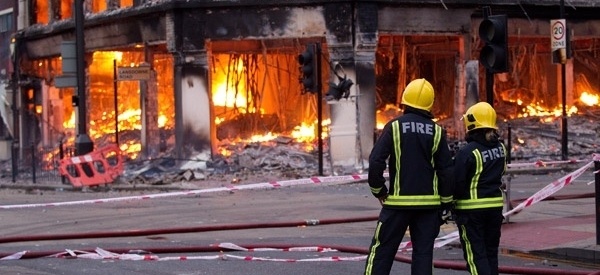
Fire and explosion hazards are significant risks that can lead to catastrophic incidents with disastrous consequences, such as loss of life, property damage, and environmental pollution. It is crucial to manage technical risks associated with Fire And Explosion Analysis to ensure safety and prevent such incidents. Technical risk management, safety case, and risk assessment are essential tools that can be used to manage these risks.
What is Technical Risk Management?
Technical risk management is a systematic approach to identifying, analyzing, evaluating, and controlling technical risks associated with a project, process, or system. Technical risks are risks associated with the use of technology, such as equipment failure, system malfunction, or human error. Technical risk management is an iterative process that involves identifying potential risks, assessing their impact and likelihood, and implementing risk controls to reduce the likelihood of occurrence or mitigate the consequences.
In fire and explosion analysis, technical risk management is critical to identifying and assessing the potential hazards associated with a system or process that could lead to a fire or explosion. This involves identifying the sources of ignition, fuel, and oxygen that could lead to a fire or explosion, as well as the potential pathways for the release of flammable or explosive materials. By identifying and assessing these risks, engineers and safety professionals can develop risk controls to reduce the likelihood of a fire or explosion occurring.
What are the Safety Case measures in industry?
A safety case is a structured argument that demonstrates how a system or process can operate safely under given conditions. A safety case provides evidence that the risks associated with a system or process have been identified, assessed, and controlled to an acceptable level. The safety case is typically developed during the design phase of a project or system and is used to demonstrate compliance with regulatory requirements and industry standards.
In fire and explosion analysis, the safety case is an essential tool for demonstrating that the risks associated with a system or process have been identified, assessed, and controlled to an acceptable level. The safety case includes a comprehensive risk assessment that identifies potential hazards and evaluates the likelihood and consequences of a fire or explosion occurring. The safety case also includes risk controls that have been implemented to reduce the likelihood of occurrence or mitigate the consequences of a fire or explosion.
How is Risk Assessment implemented in safety areas?
Risk assessment is the process of evaluating the likelihood and consequences of a particular hazard occurring. Risk assessment involves identifying potential hazards, assessing the likelihood of occurrence, and evaluating the consequences of the hazard. Risk assessment is a critical component of technical risk management and is used to identify the risks associated with a system or process.
In fire and explosion analysis, risk assessment is used to identify the potential hazards associated with a system or process that could lead to a fire or explosion. This involves identifying the sources of ignition, fuel, and oxygen that could lead to a fire or explosion, as well as the potential pathways for the release of flammable or explosive materials. The risk assessment also evaluates the likelihood and consequences of a fire or explosion occurring and identifies risk controls that can be implemented to reduce the likelihood of occurrence or mitigate the consequences.
Conclusion
Managing technical risks is a vital component of fire and explosion safety. Technical risk management, safety case, and risk assessment are essential tools that can be used to manage these risks. Technical risk management is a systematic approach to identifying, analyzing, evaluating, and controlling technical risks associated with a project, process, or system. The safety case is a structured argument that demonstrates how a system or process can operate safely under given conditions. Risk assessment is the process of evaluating the likelihood and consequences of a particular hazard occurring.
In fire and explosion analysis, technical risk management, safety case, and Risk Assessment are critical to identifying potential hazards, assessing the likelihood and consequences of a fire or explosion occurring, and developing risk controls to reduce the likelihood of occurrence or mitigate the consequences. By using these tools, engineers and safety.
